The history of Rotochopper is a story about viewing challenges as opportunities. The story begins with a nagging problem in the recycling industry and a unique approach that became known as “Perfect In One Pass”®.
Rotochopper offers a wide range of equipment options and solution selections to meet a variety of needs across industries and use cases.
Through our commitment to customer success, we lead the industry in innovation, developing several industry firsts, patented features, and exclusive options.
Our factory-direct customer support team provides world-class service and expert guidance to keep your grinding operation running at peak performance.
We are an employee-owned (ESOP) manufacturer committed to customer success and profitability, employee engagement and community connections.
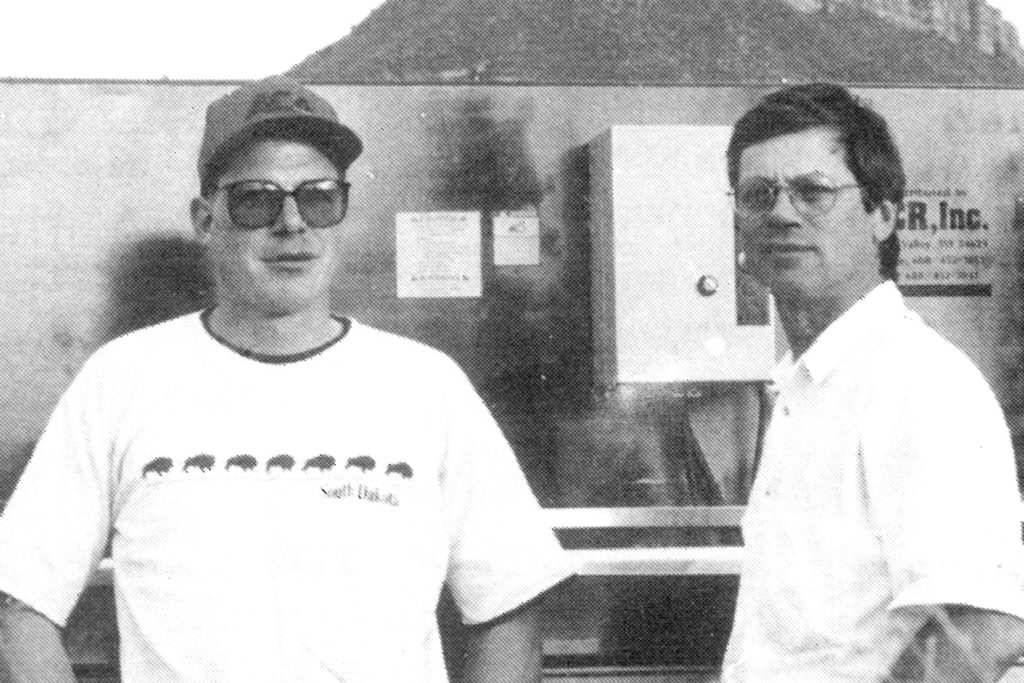
A Tradition of Customer-Centricity
The Rotochopper brand has long been synonymous with “Perfect In One Pass” grinding precision and simplicity. But the history behind the Rotochopper name is much more than innovation in grinding equipment. It’s about a group of people with a different philosophy toward waste materials and a unique focus on customer success. The Rotochopper brand began when two companies from different industries joined forces to manufacture unique recycling equipment. Our co-founders, Fred Peltz and Vince Hundt, established our core values of customer-centricity...

A Tradition of Customer-Centricity
The Rotochopper brand has long been synonymous with “Perfect In One Pass” grinding precision and simplicity. But the history behind the Rotochopper name is much more than innovation in grinding equipment. It’s about a group of people with a different philosophy toward waste materials and a unique focus on customer success. The Rotochopper brand began when two companies from different industries joined forces to manufacture unique recycling equipment. Our co-founders, Fred Peltz and Vince Hundt, established our core values of customer-centricity and “Perfect In One Pass” engineering that continue to define Rotochopper today.
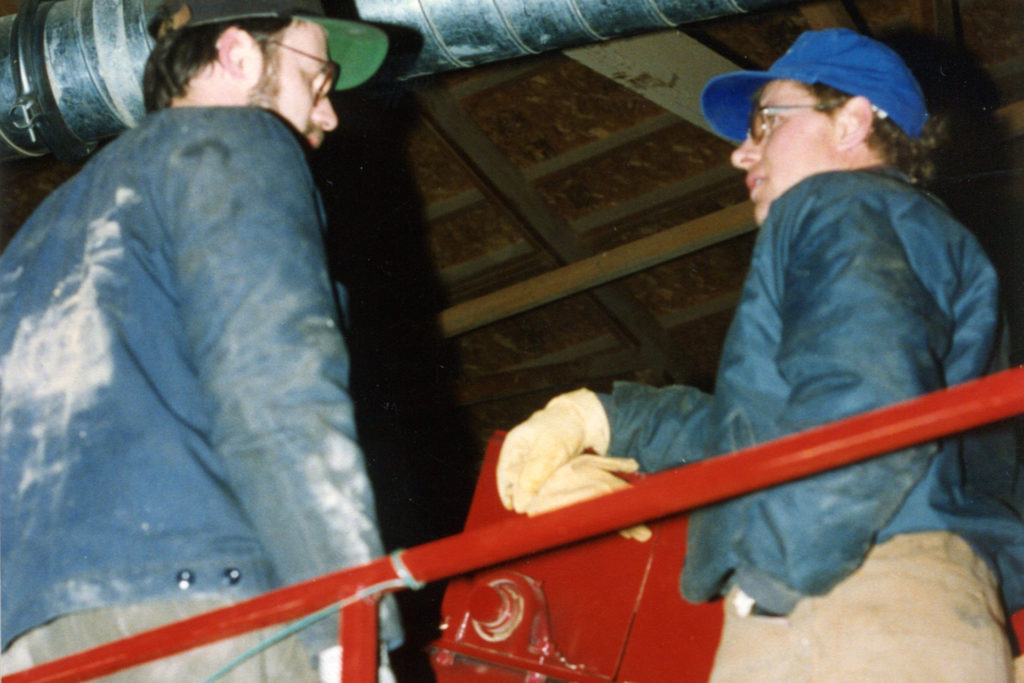
Fred Peltz, Rotochopper Co-Founder
In 1980, Fred Peltz was a recent high school graduate in central Minnesota with an astonishing ability for building, repairing, and designing machinery. Raised on a dairy farm, he learned at an early age the fundamentals of hard work and mechanics. By age 14, he was repairing equipment for local farmers. At age 18, he had his own shop on his parents’ farm. When he was 30, he built a new shop to accommodate the growth of his company, Peltz...

Fred Peltz, Rotochopper Co-Founder
In 1980, Fred Peltz was a recent high school graduate in central Minnesota with an astonishing ability for building, repairing, and designing machinery. Raised on a dairy farm, he learned at an early age the fundamentals of hard work and mechanics. By age 14, he was repairing equipment for local farmers. At age 18, he had his own shop on his parents’ farm. When he was 30, he built a new shop to accommodate the growth of his company, Peltz Mfg, which specialized in building machines Fred had designed to fill various market niches.
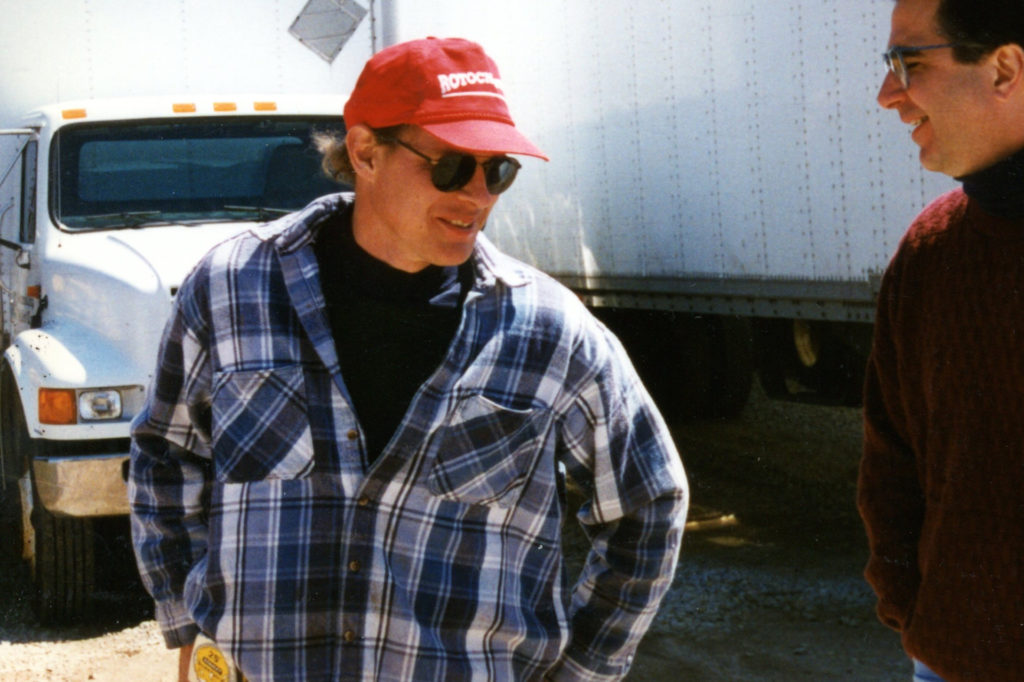
New Challenges
Always looking for new challenges, Fred would study equipment and find ways to improve it, or design new machines altogether. He quickly developed a reputation for innovation based on customer input. In the late 1980’s, his obsession with designing better equipment solutions led to the creation of Rotochopper, when Fred came across a piece of paper recycling equipment and decided he could build a better machine. The company name and phone number on the machine led Fred to company owner, Vince...

New Challenges
Always looking for new challenges, Fred would study equipment and find ways to improve it, or design new machines altogether. He quickly developed a reputation for innovation based on customer input. In the late 1980’s, his obsession with designing better equipment solutions led to the creation of Rotochopper, when Fred came across a piece of paper recycling equipment and decided he could build a better machine. The company name and phone number on the machine led Fred to company owner, Vince Hundt, who would later become his business partner.
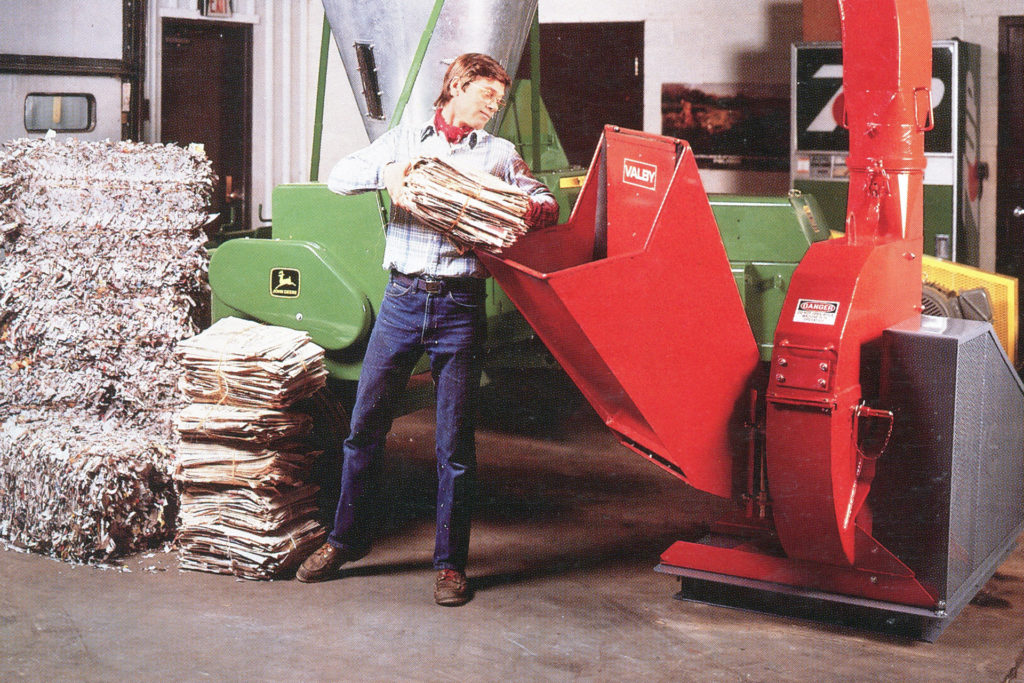
Vince Hundt, Rotochopper Co-Founder
Raised 250 miles from St. Martin, MN on a 400-acre diversified Wisconsin farm, Vince Hundt also learned a great deal about machines at a very early age. In 1973, after attending the University of Wisconsin for three years, Hundt purchased and began to operate a dairy farm near Coon Valley, Wisconsin. Dairy farms in this area tend to be half cropland and half woodland, and Hundt saw opportunity in the marketplace. Vince founded Poplar Coulee Ridge (PCR) Inc. in 1982...

Vince Hundt, Rotochopper Co-Founder
Raised 250 miles from St. Martin, MN on a 400-acre diversified Wisconsin farm, Vince Hundt also learned a great deal about machines at a very early age. In 1973, after attending the University of Wisconsin for three years, Hundt purchased and began to operate a dairy farm near Coon Valley, Wisconsin. Dairy farms in this area tend to be half cropland and half woodland, and Hundt saw opportunity in the marketplace. Vince founded Poplar Coulee Ridge (PCR) Inc. in 1982 to import and market farm-sized European forestry equipment to utilize the local farm woodlots as a source of saleable wood fiber. The concept quickly took off, keeping Hundt busy with the sales of skidding winches and wood chippers.
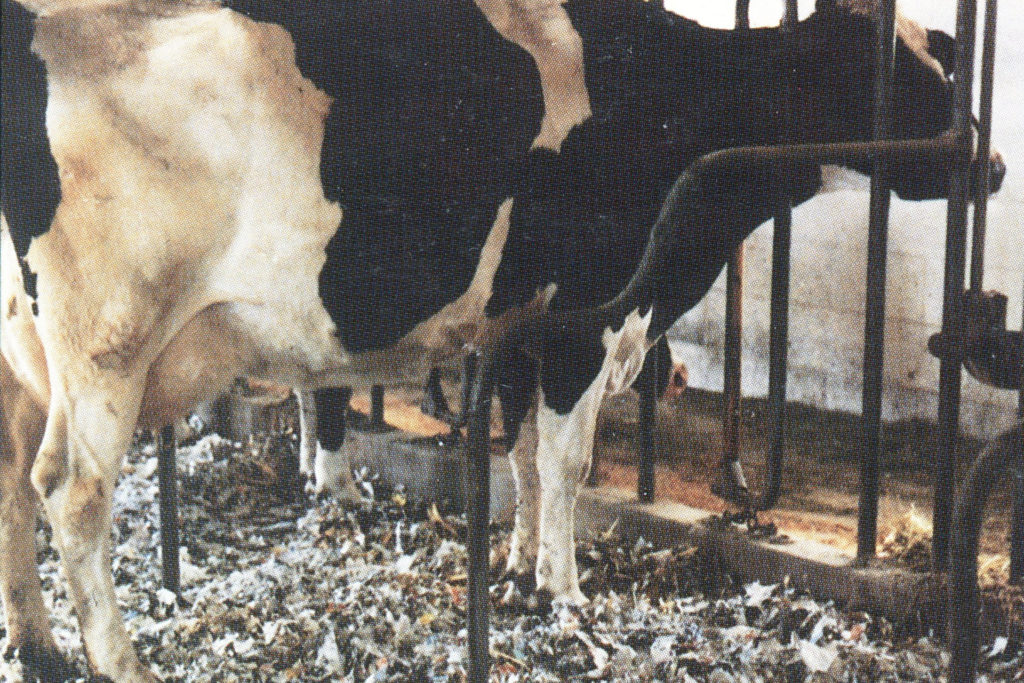
Scarcity Drives Demand
In 1988, a severe drought caused crop failures and created a need for new sources of animal bedding. At the same time, recycling mandates had created a glut of unwanted newspaper in the hands of waste haulers who lacked equipment to convert this waste into a saleable product. Hundt saw opportunity in these unwanted papers, and designed a one-of-a-kind system that incorporated a John Deere hay baler, a wood chipper, and a sheet metal cyclone to output farm-sized bales of chopped...

Scarcity Drives Demand
In 1988, a severe drought caused crop failures and created a need for new sources of animal bedding. At the same time, recycling mandates had created a glut of unwanted newspaper in the hands of waste haulers who lacked equipment to convert this waste into a saleable product. Hundt saw opportunity in these unwanted papers, and designed a one-of-a-kind system that incorporated a John Deere hay baler, a wood chipper, and a sheet metal cyclone to output farm-sized bales of chopped newspaper. The PCR Newspaper Bedding System proved itself as an instant hit all over North America.
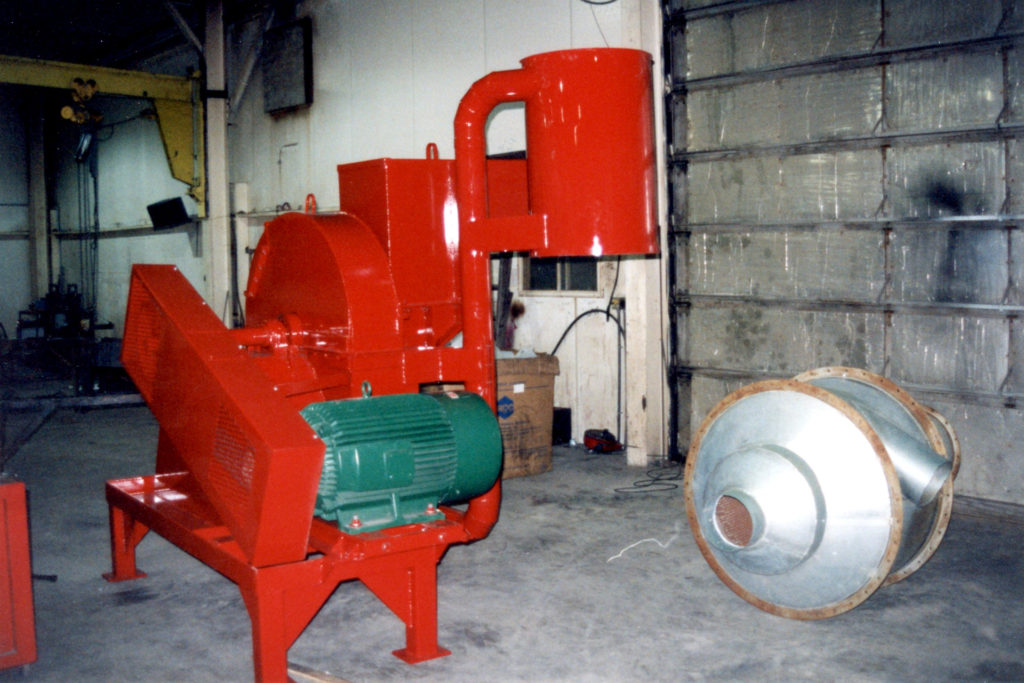
A Partnership and a Better Solution
A PCR baler showed up near St. Martin, MN, where Fred Peltz had the opportunity to get his hands on it. Fred quickly envisioned several improvements to the design and decided to call the PCR number. He introduced himself to Vince and suggested that he had the facilities and abilities to build more efficient recycling equipment that would be easier to operate and maintain. The two entrepreneurs struck a deal and a friendship. From that day forward, all manufacturing was...

A Partnership and a Better Solution
A PCR baler showed up near St. Martin, MN, where Fred Peltz had the opportunity to get his hands on it. Fred quickly envisioned several improvements to the design and decided to call the PCR number. He introduced himself to Vince and suggested that he had the facilities and abilities to build more efficient recycling equipment that would be easier to operate and maintain. The two entrepreneurs struck a deal and a friendship. From that day forward, all manufacturing was moved to St. Martin, Minnesota, where it remains today.
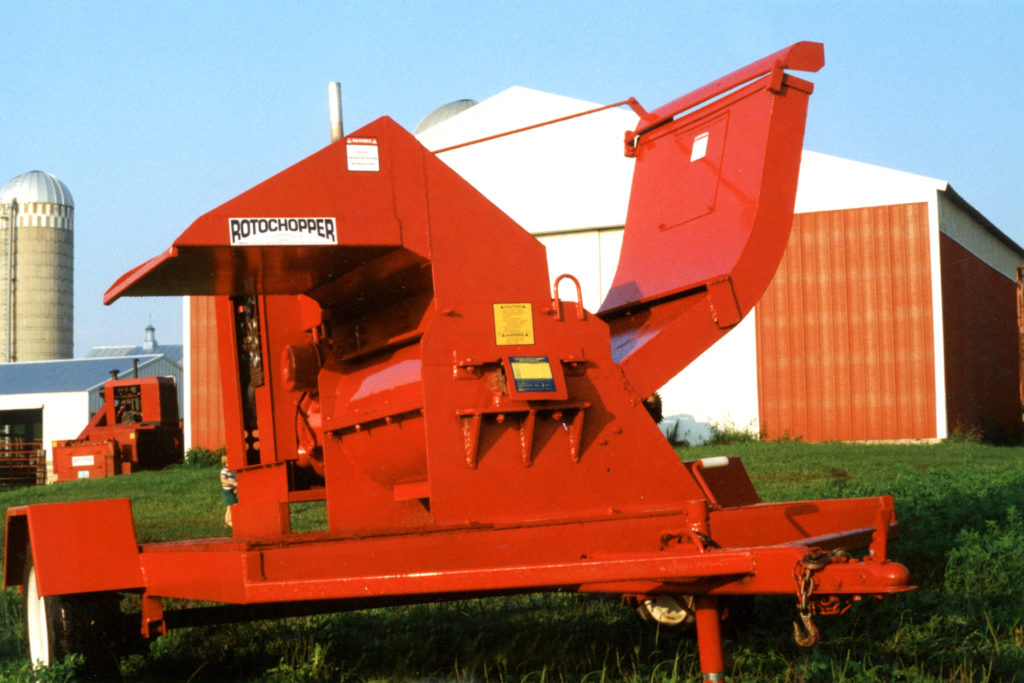
The First Rotochopper
In the summer of 1990, the 1090 Newspaper Bedding System built by Peltz Manufacturing made its debut, incorporating a newly designed paper chopper with a 30-horsepower electric motor, and a newly minted name: Rotochopper. This system was immediately popular because it was durable and easy to use, and it set the industry standard for ability to make the necessary particle size. This equipment design philosophy—focusing on precision particle size control and customer needs—set the foundation for all Rotochopper engineering.

The First Rotochopper
In the summer of 1990, the 1090 Newspaper Bedding System built by Peltz Manufacturing made its debut, incorporating a newly designed paper chopper with a 30-horsepower electric motor, and a newly minted name: Rotochopper. This system was immediately popular because it was durable and easy to use, and it set the industry standard for ability to make the necessary particle size. This equipment design philosophy—focusing on precision particle size control and customer needs—set the foundation for all Rotochopper engineering.
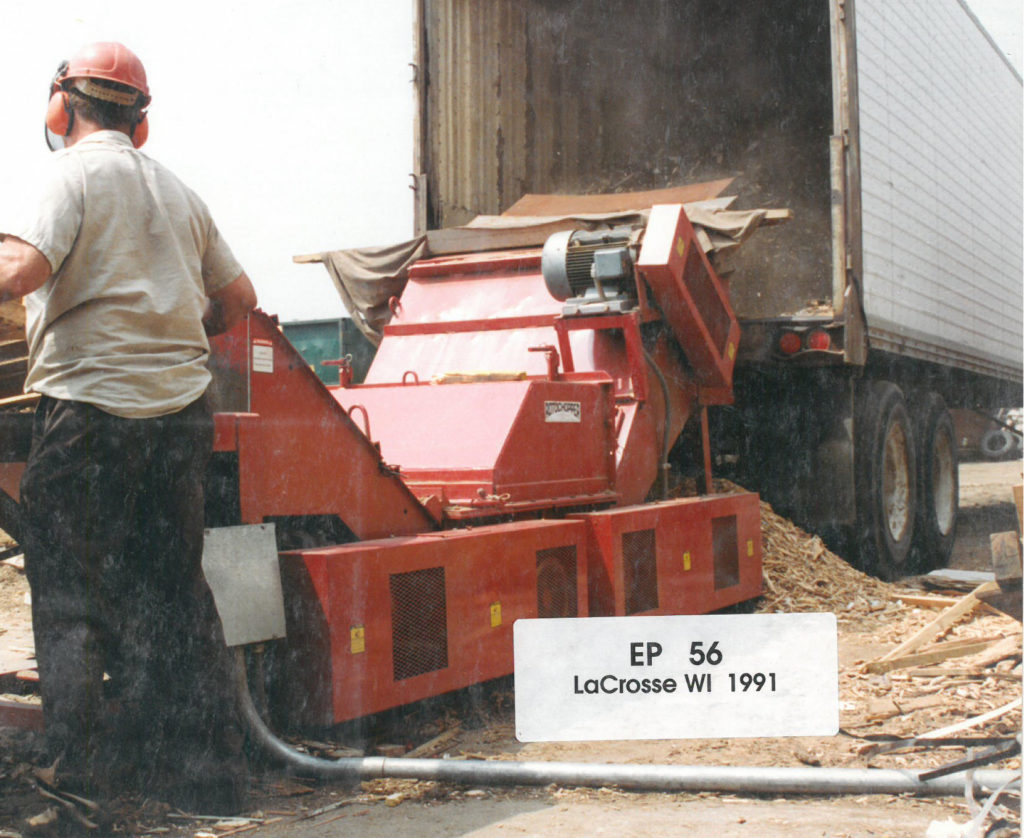
Innovating for New Regulations
Due to federal and state regulations pertaining to the disposal of waste products, including waste wood products, a premium was placed upon converting such wastes into recyclable materials. The EP-56, hand-fed pallet grinder, was developed and manufactured in 1991 to meet the needs of recycling bulky wooden objects, such as surplus wooden pallets, into a more compact and recyclable form.

Innovating for New Regulations
Due to federal and state regulations pertaining to the disposal of waste products, including waste wood products, a premium was placed upon converting such wastes into recyclable materials. The EP-56, hand-fed pallet grinder, was developed and manufactured in 1991 to meet the needs of recycling bulky wooden objects, such as surplus wooden pallets, into a more compact and recyclable form.
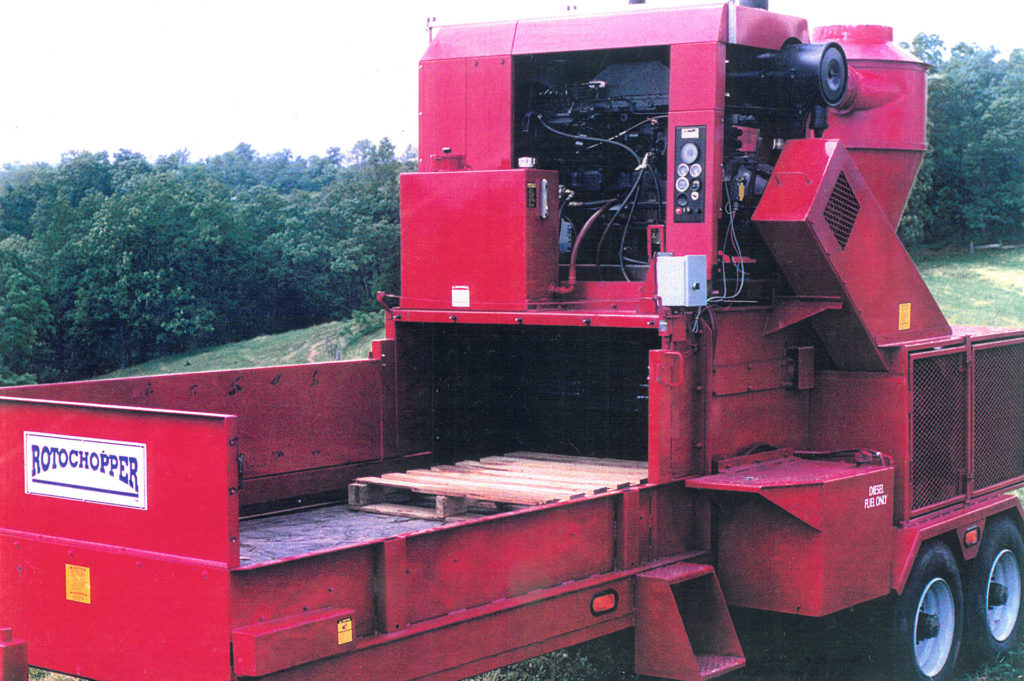
Expanding Markets
Within a few short years, dozens of waste handling professionals had developed great faith in the Rotochopper brand and were asking for solutions to an array of recycling challenges. We responded with new machines, new processes, and new markets. In 1992, we released a machine specifically designed to easily grind wooden pallets into boiler fuel with a uniform particle size with one pass. By 1994, the first Rotochopper horizontal grinder was in use producing boiler fuel and animal bedding from pallets...

Expanding Markets
Within a few short years, dozens of waste handling professionals had developed great faith in the Rotochopper brand and were asking for solutions to an array of recycling challenges. We responded with new machines, new processes, and new markets. In 1992, we released a machine specifically designed to easily grind wooden pallets into boiler fuel with a uniform particle size with one pass. By 1994, the first Rotochopper horizontal grinder was in use producing boiler fuel and animal bedding from pallets and other forms of wood waste.
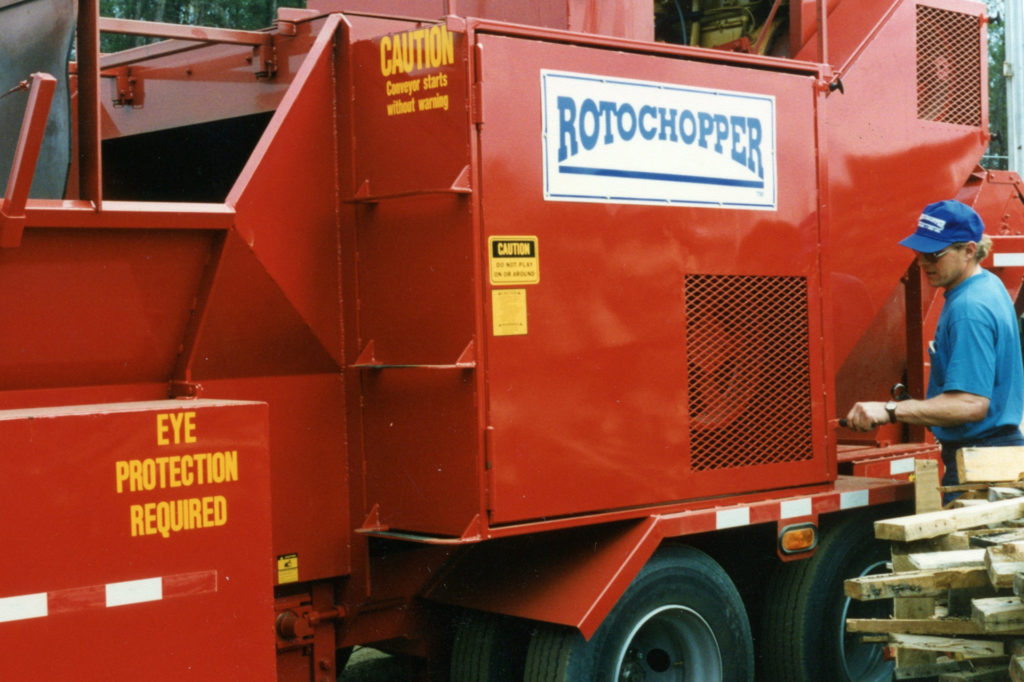
The First Rotochopper “MC” Grinder
Featuring a steel infeed conveyor belt and a cleated feed roller, the first Rotochopper MC grinder was a huge leap forward in wood recycling technology, offering higher efficiency and better particle size control than anything on the market. Our MC horizontal grinders were the first portable systems capable of producing a uniform finished product from pallet waste in a single pass. Rotochopper grinding equipment played an integral role in the development of the pallet recycling market, allowing customers to make...

The First Rotochopper “MC” Grinder
Featuring a steel infeed conveyor belt and a cleated feed roller, the first Rotochopper MC grinder was a huge leap forward in wood recycling technology, offering higher efficiency and better particle size control than anything on the market. Our MC horizontal grinders were the first portable systems capable of producing a uniform finished product from pallet waste in a single pass. Rotochopper grinding equipment played an integral role in the development of the pallet recycling market, allowing customers to make premium end products from waste that had previously been a financial liability.
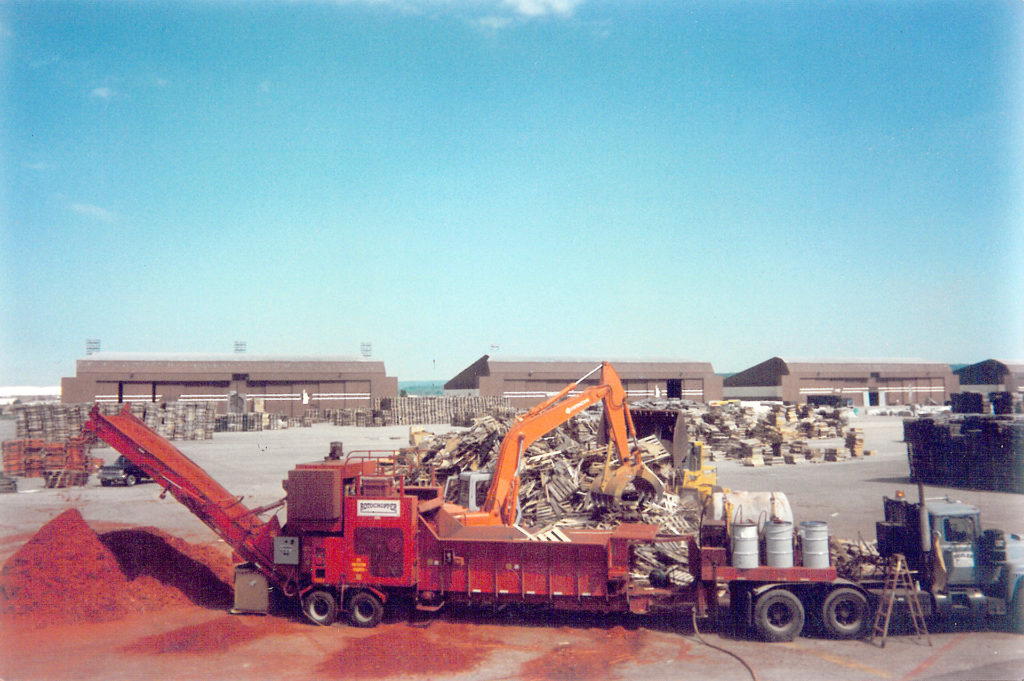
“Perfect In One Pass”
As we expanded into new applications, a commitment to finished product control continued to shape our engineering. We focused on designing equipment that would not only provide the end product specifications our customers needed, but would do so conveniently and consistently. To this end, we developed a screen change system in 1996 that remains the fastest and simplest way to change screens to make different products. Shortly after, we launched the first system in the world capable of simultaneously grinding...

“Perfect In One Pass”
As we expanded into new applications, a commitment to finished product control continued to shape our engineering. We focused on designing equipment that would not only provide the end product specifications our customers needed, but would do so conveniently and consistently. To this end, we developed a screen change system in 1996 that remains the fastest and simplest way to change screens to make different products. Shortly after, we launched the first system in the world capable of simultaneously grinding and coloring landscape mulch. Introduced in 1997, our Power Application System (PAS) remains the most efficient means of producing colored landscape mulch from raw wood fiber.
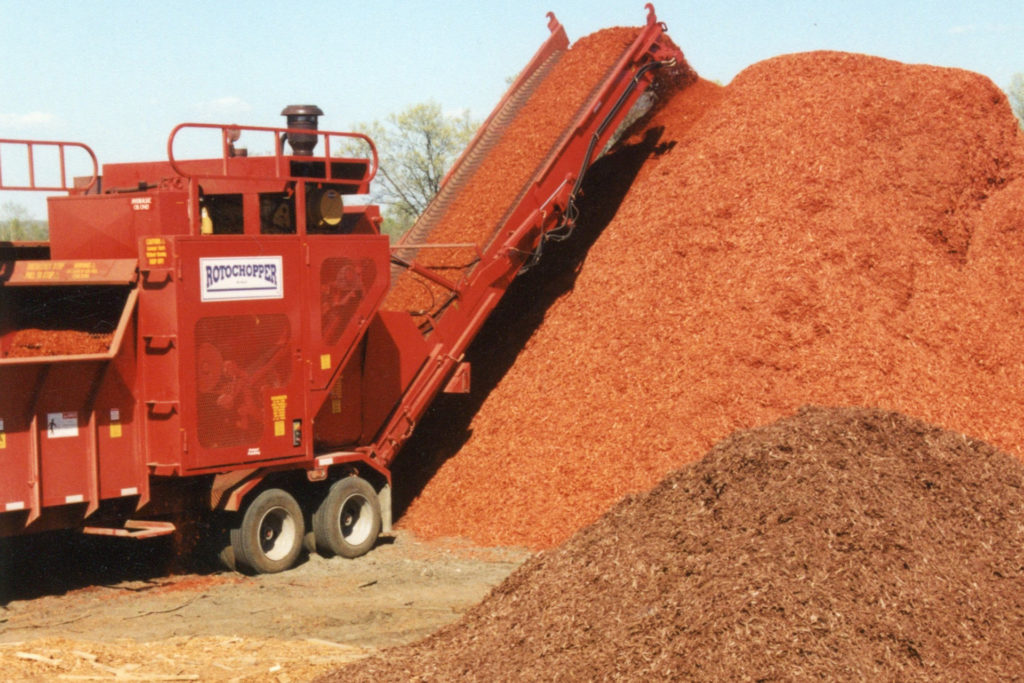
A New Outlook on Wood Waste
Not just a new system, our patented colorizer provided a whole new way of looking at wood waste. This patented technology allowed wood waste handlers to easily enter the growing landscape products market. In previous years, wood waste handlers were able to sell their ground wood for $10 per ton for fuel, they were now able to sell the same wood for $60 or even $100 per ton. Unable to give much of that ground product away in 1996, by...

A New Outlook on Wood Waste
Not just a new system, our patented colorizer provided a whole new way of looking at wood waste. This patented technology allowed wood waste handlers to easily enter the growing landscape products market. In previous years, wood waste handlers were able to sell their ground wood for $10 per ton for fuel, they were now able to sell the same wood for $60 or even $100 per ton. Unable to give much of that ground product away in 1996, by 1998 many owners were looking for more material to grind, color, and sell.
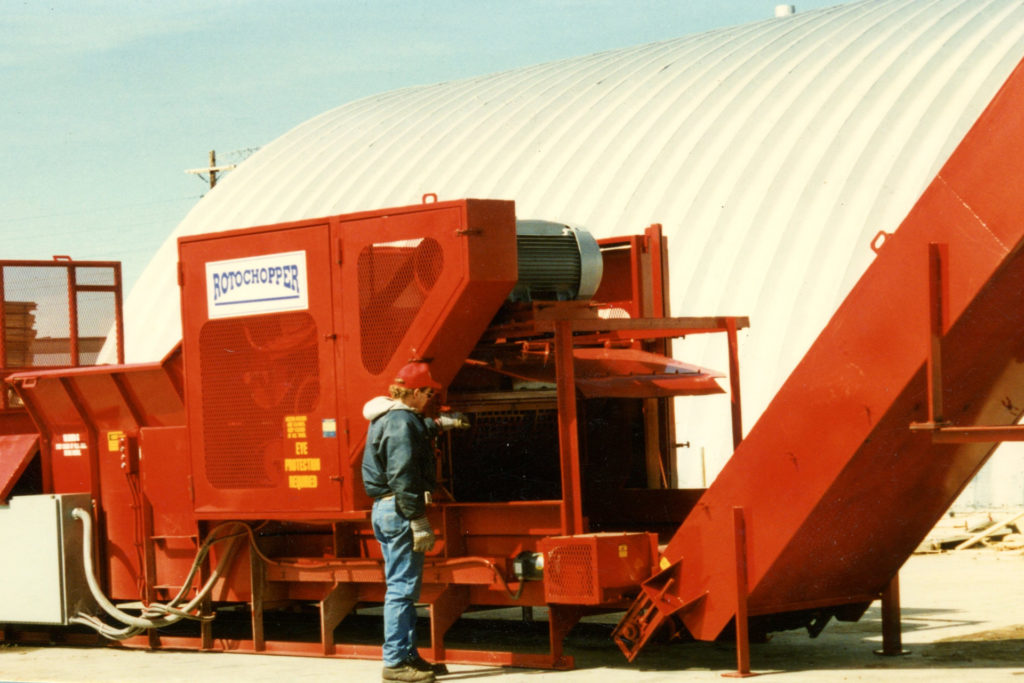
New Machines & New Markets
Throughout the late 1990s, the Rotochopper line-up continued to grow. Professionals from a wide range of industries continued to turn to Fred Peltz for solutions to their challenging applications. In addition to new features and options, we developed unique machines for specialized applications, like our compact grinders for sawmill waste. The reputation of Rotochopper equipment for “Perfect In One Pass” simplicity grew and spread into additional industries. Outlook for the Rotochopper brand had never been brighter.

New Machines & New Markets
Throughout the late 1990s, the Rotochopper line-up continued to grow. Professionals from a wide range of industries continued to turn to Fred Peltz for solutions to their challenging applications. In addition to new features and options, we developed unique machines for specialized applications, like our compact grinders for sawmill waste. The reputation of Rotochopper equipment for “Perfect In One Pass” simplicity grew and spread into additional industries. Outlook for the Rotochopper brand had never been brighter.
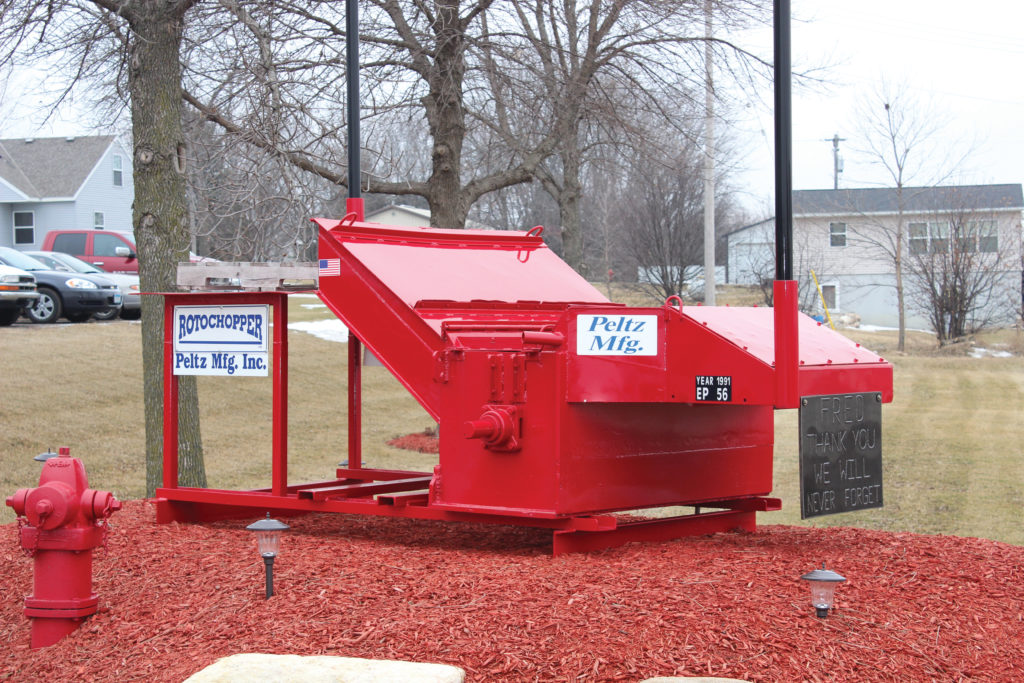
Shocked By Tragedy
In the spring of 2000, we experienced a horrible tragedy. Fred Peltz, while overseeing completion of a factory expansion, fell from the roof, and died from his injuries a few days later. Our company, our town, and our customers came together to fill the church, the town hall, and Maine Street in St. Martin to honor a truly wonderful, energetic, and creative man.

Shocked By Tragedy
In the spring of 2000, we experienced a horrible tragedy. Fred Peltz, while overseeing completion of a factory expansion, fell from the roof, and died from his injuries a few days later. Our company, our town, and our customers came together to fill the church, the town hall, and Maine Street in St. Martin to honor a truly wonderful, energetic, and creative man.
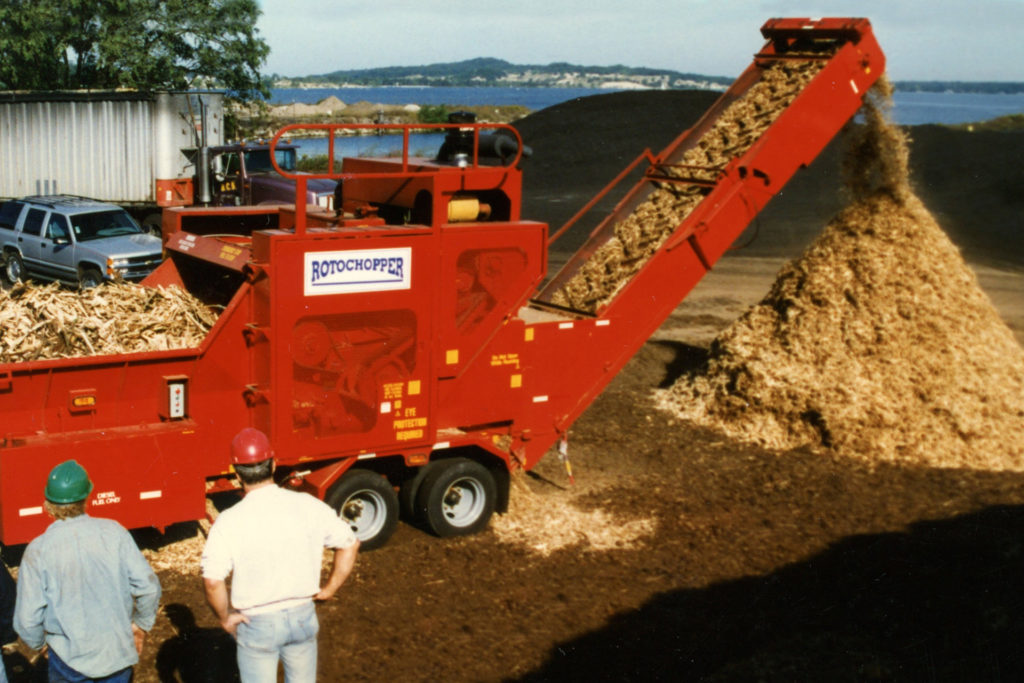
Continuing Fred’s Commitment to Excellence
Devastated by Fred’s loss, the employees at Rotochopper knew that the best way to keep Fred’s spirit alive was to continue his legacy in the equipment we design, build, and manufacture. Seven days after his death, Rotochopper was at a large equipment trade show proudly displaying our latest equipment innovations. Although Fred passed away in the spring of 2000, his passion for innovation and customer success continues to define everything we do. Many of Fred’s original designs are still integral...

Continuing Fred’s Commitment to Excellence
Devastated by Fred’s loss, the employees at Rotochopper knew that the best way to keep Fred’s spirit alive was to continue his legacy in the equipment we design, build, and manufacture. Seven days after his death, Rotochopper was at a large equipment trade show proudly displaying our latest equipment innovations. Although Fred passed away in the spring of 2000, his passion for innovation and customer success continues to define everything we do. Many of Fred’s original designs are still integral to the machines we build today. But more importantly, his design philosophy remains at the core of our engineering, and the Rotochopper “Perfect In One Pass” advantage.
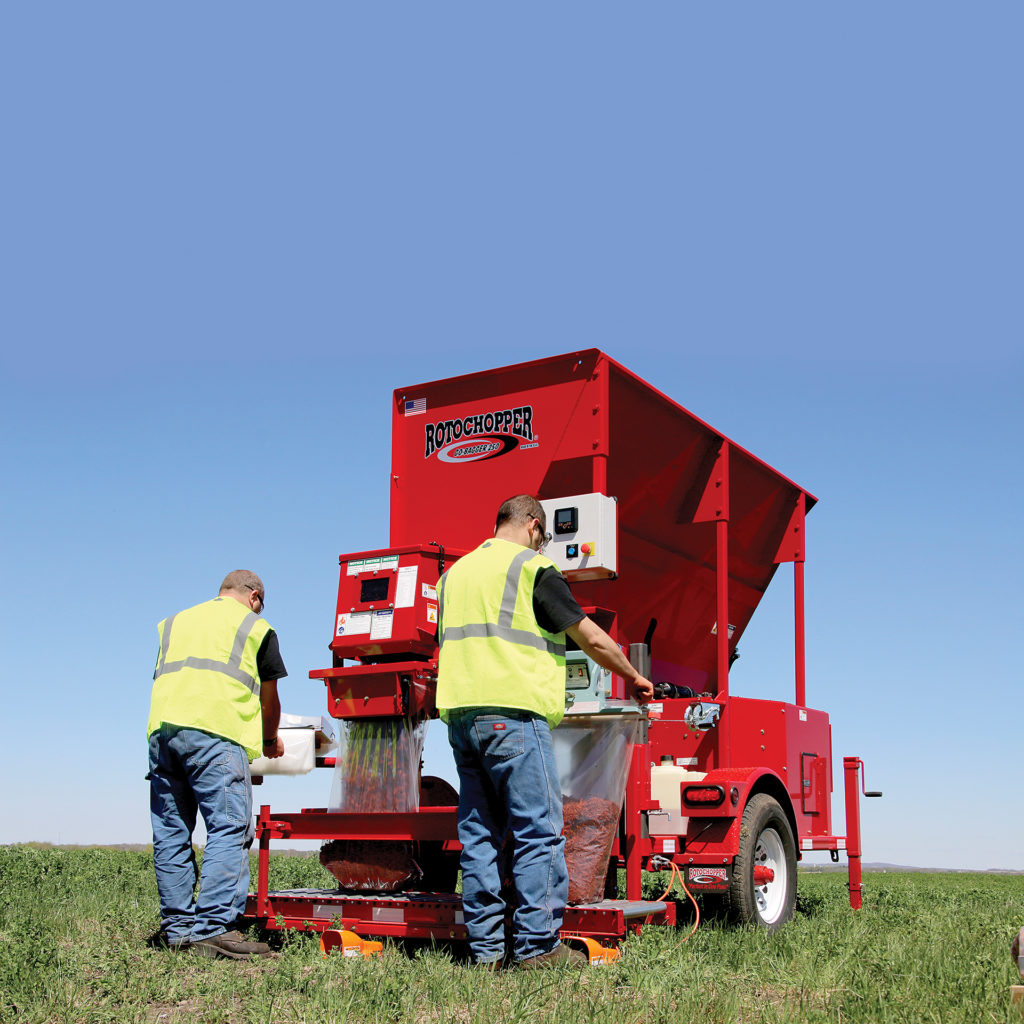
Carrying On An Unwavering Tradition
Since Fred’s passing, we have continued to develop unique equipment solutions, including the first self-contained bagging plant, and the first purpose-built shingle grinder, and the addition of multiple patented features and options. As a factory-direct company, we remain uniquely connected to our customers, and attuned to customer feedback. After more than 25 years of grinding innovation, we are committed to creating more opportunities for our customers with new ideas and new equipment solutions.

Carrying On An Unwavering Tradition
Since Fred’s passing, we have continued to develop unique equipment solutions, including the first self-contained bagging plant, and the first purpose-built shingle grinder, and the addition of multiple patented features and options. As a factory-direct company, we remain uniquely connected to our customers, and attuned to customer feedback. After more than 25 years of grinding innovation, we are committed to creating more opportunities for our customers with new ideas and new equipment solutions.
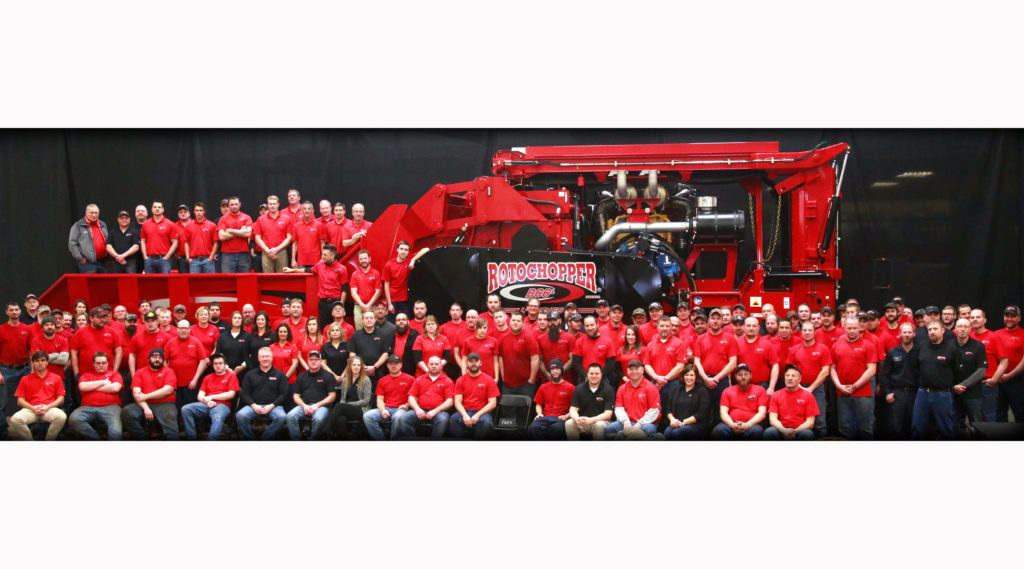
Creation of Employee Stakeholders
Rotochopper invested in their employees by making a portion of the company employee owned (ESOP). Since our team members are invested in the Rotochopper brand, they have an ownership stake in the future of the recycling industry and the long-term success of each customer.

Creation of Employee Stakeholders
Rotochopper invested in their employees by making a portion of the company employee owned (ESOP). Since our team members are invested in the Rotochopper brand, they have an ownership stake in the future of the recycling industry and the long-term success of each customer.
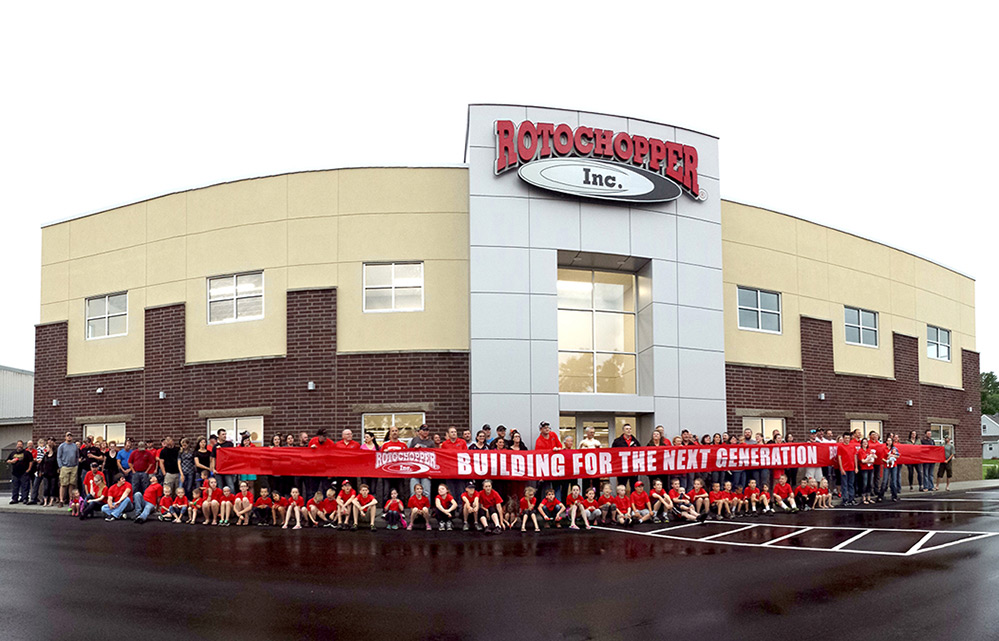
Building For The Future
In June 2016, we celebrated the completion of the new corporate office expansion with an official ribbon cutting ceremony. The new office represents Rotochopper's core values; our commitment to our customers, employees, and Central Minnesota. In addition to the office expansion, additional warehouse space and a new paint booth were added to offer additional shipping/receiving space to better serve our customers.

Building For The Future
In June 2016, we celebrated the completion of the new corporate office expansion with an official ribbon cutting ceremony. The new office represents Rotochopper’s core values; our commitment to our customers, employees, and Central Minnesota. In addition to the office expansion, additional warehouse space and a new paint booth were added to offer additional shipping/receiving space to better serve our customers.
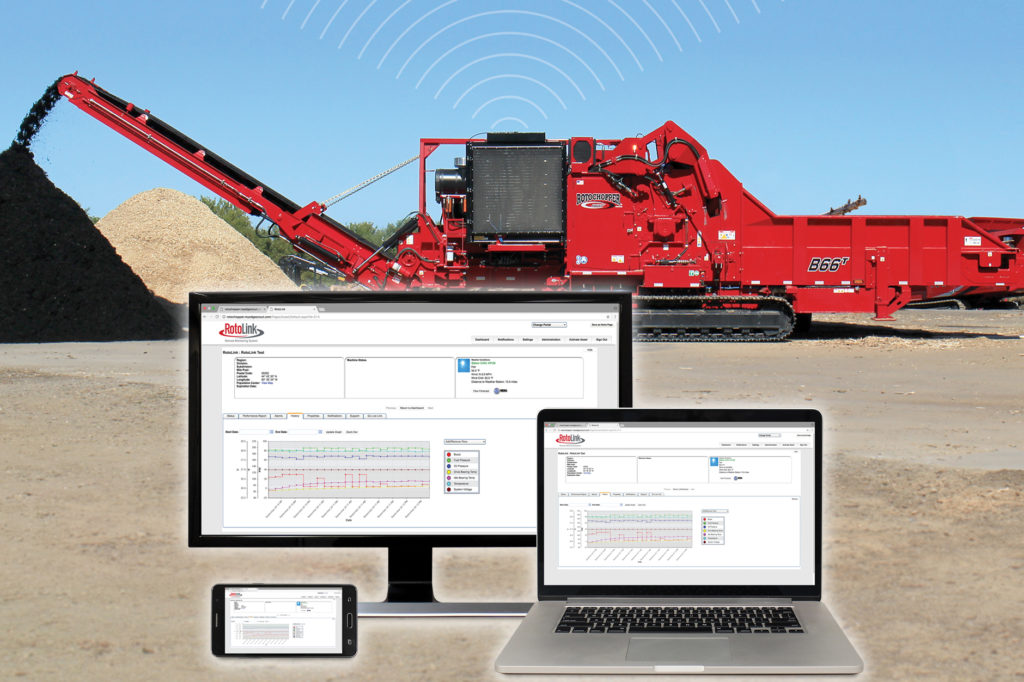
Propelled by Continuous Innovation
Our passion to provide our customers with the best equipment in the industry propels Rotochopper to continually development new technology for our grinders. We've built upon the foundation of our original colorizer to bring you the Generation II Colorizer that maximizes production rates without sacrificing quality. To help our customers track their grinders in real-time and predict maintenance needs we developed RotoLink Monitoring System to connect your grinder to your smartphone or computer to monitor and adjust critical settings from...

Propelled by Continuous Innovation
Our passion to provide our customers with the best equipment in the industry propels Rotochopper to continually development new technology for our grinders. We’ve built upon the foundation of our original colorizer to bring you the Generation II Colorizer that maximizes production rates without sacrificing quality. To help our customers track their grinders in real-time and predict maintenance needs we developed RotoLink Monitoring System to connect your grinder to your smartphone or computer to monitor and adjust critical settings from anywhere in the world.
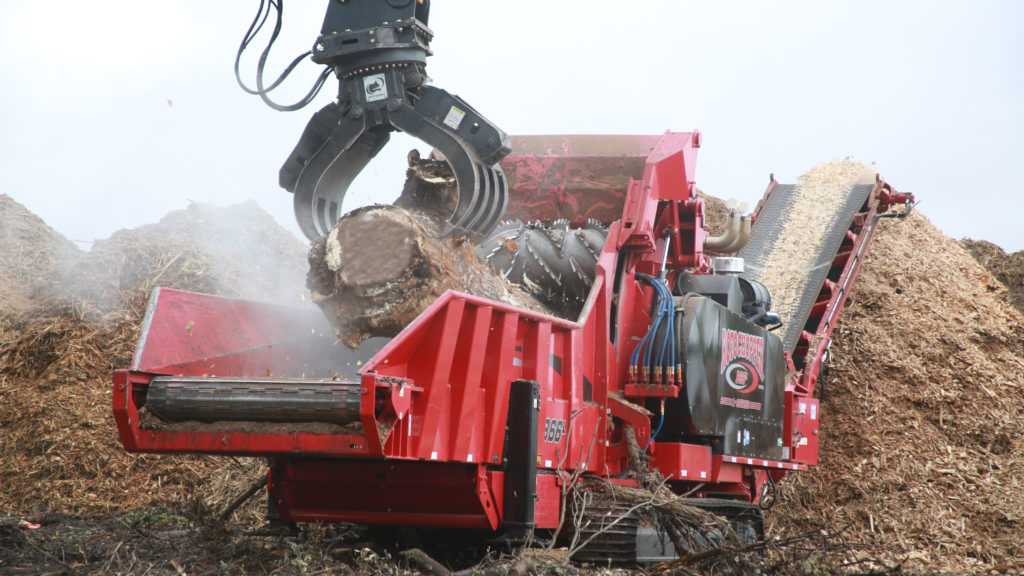
Rotochopper’s Largest Endeavor Yet
Making its debut at Demo Day 2018, the B-66 L-Series has raised the bar as the most advanced fiber processing system on the market. Our research & development team designed this grinder to meet the needs of grinding larger, more abrasive feedstock materials and increase overall production rates with unmatched efficiency.

Rotochopper’s Largest Endeavor Yet
Making its debut at Demo Day 2018, the B-66 L-Series has raised the bar as the most advanced fiber processing system on the market. Our research & development team designed this grinder to meet the needs of grinding larger, more abrasive feedstock materials and increase overall production rates with unmatched efficiency.
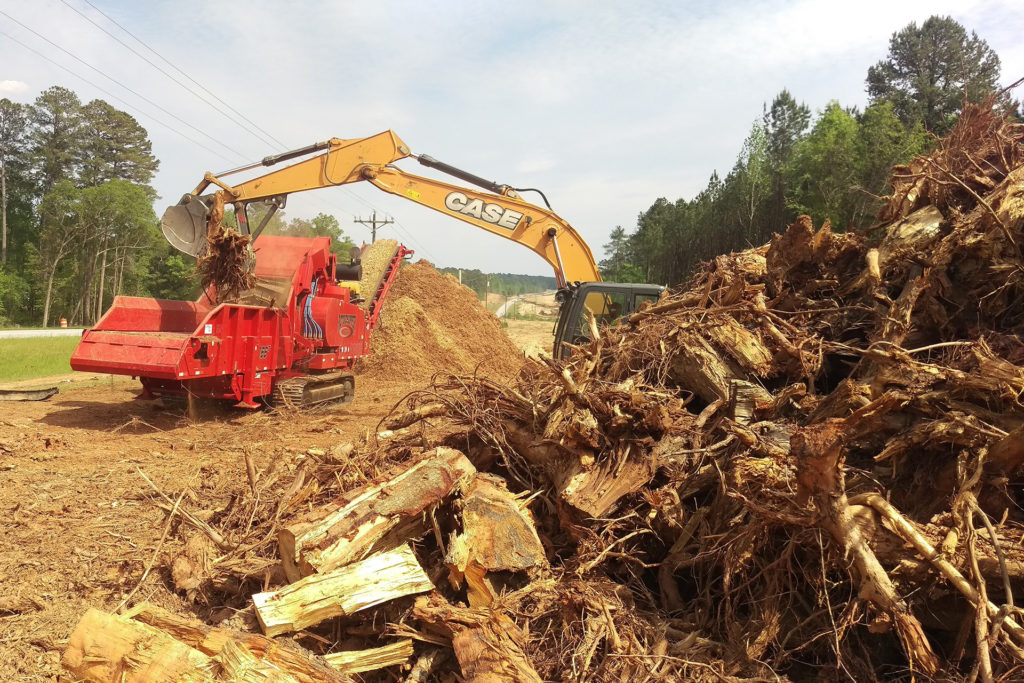
Unique From the Start
With this dedication to innovation, our equipment has changed dramatically since the first 30-horsepower Rotochopper. But thanks to an unwavering commitment to our customers, the Rotochopper brand has remained remarkably consistent, centered by a philosophy that waste materials are profit opportunities just waiting for the right partnerships between the customer and a group of people committed to their success.

Unique From the Start
With this dedication to innovation, our equipment has changed dramatically since the first 30-horsepower Rotochopper. But thanks to an unwavering commitment to our customers, the Rotochopper brand has remained remarkably consistent, centered by a philosophy that waste materials are profit opportunities just waiting for the right partnerships between the customer and a group of people committed to their success.
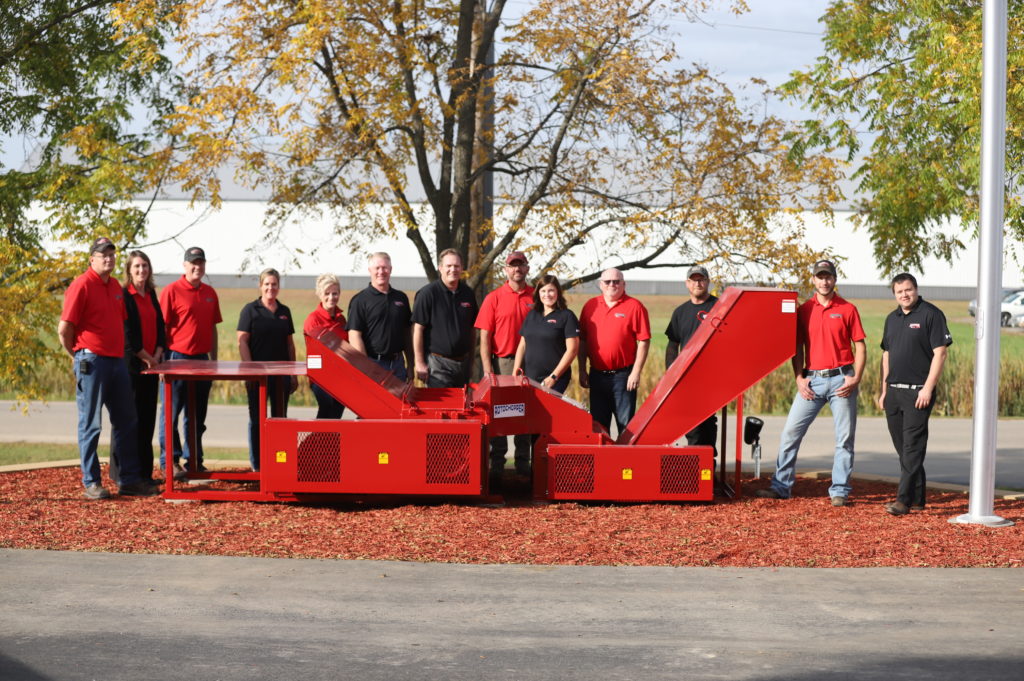
30 Years of Innovation
New landscaping was added in front of Rotochopper headquarters in St. Martin, MN in the fall of 2020. The display includes a restored EP-56 pallet grinder, honoring our late co-founder, Fred Peltz. The EP-56 was a hand-fed pallet grinder manufactured in 1991. Humble beginnings for a team that now builds 1050 hp grinders!

30 Years of Innovation
New landscaping was added in front of Rotochopper headquarters in St. Martin, MN in the fall of 2020. The display includes a restored EP-56 pallet grinder, honoring our late co-founder, Fred Peltz. The EP-56 was a hand-fed pallet grinder manufactured in 1991. Humble beginnings for a team that now builds 1050 hp grinders!
Want to Learn More?
Contact A Sales RepRotochopper, Inc.
217 West Street, PO Box 295
St. Martin, MN 56376
Phone: 320-875-9950
Email: info@rotochopper.com
Stay Connected
Connect with Rotochopper to see our machines in action, new products, news and events!
Join our Email List to stay up to date on the latest product releases and updates, industry news, and offers.
We would love to see your photos and videos! Tag #Rotochopper in your posts to share them with us.
